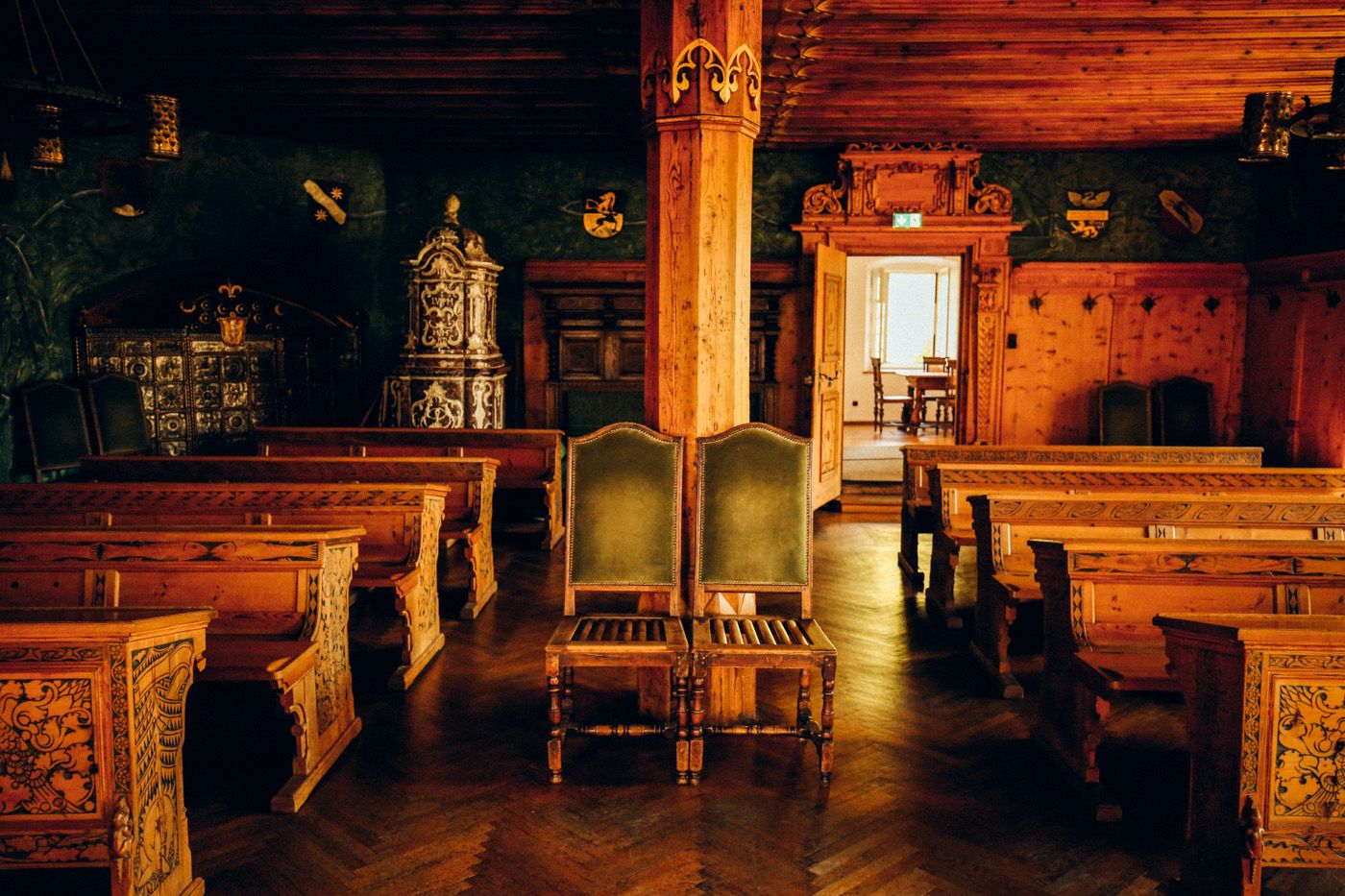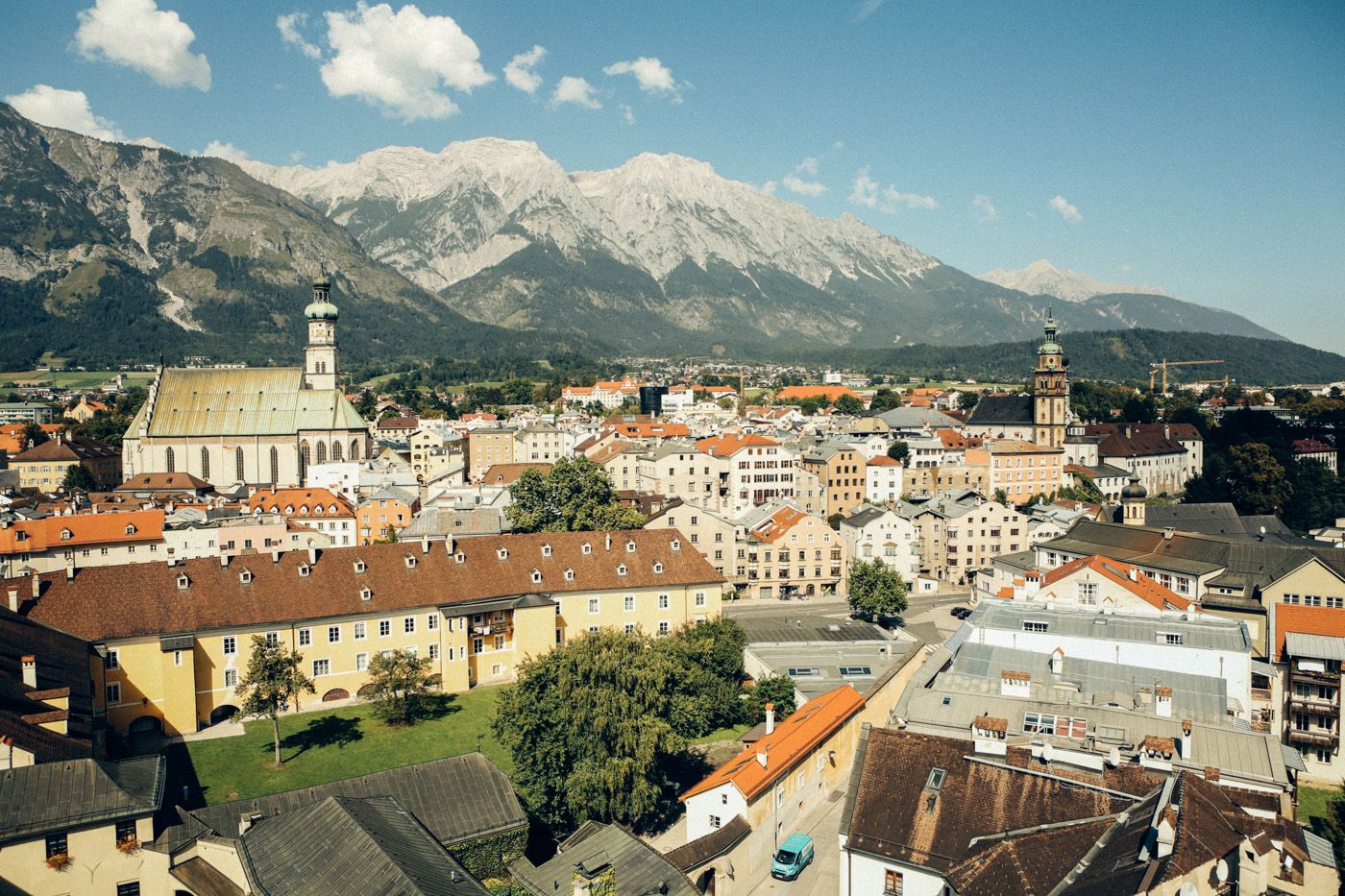
Hall in Tirol is one of the most popular tourist destinations in the region thanks to its delightful old town with charming narrow streets and a beautiful Christmas market. A stroll through the medieval town centre is somewhat reminiscent of small Italian towns, with great attention to detail evident in many places.
Its long history dates back to the 13th century, when Hall in Tirol became an important trading town thanks to salt mining in the nearby mountains. This is also reflected in the town's coat of arms, which to this day depicts two lions with a barrel of salt.
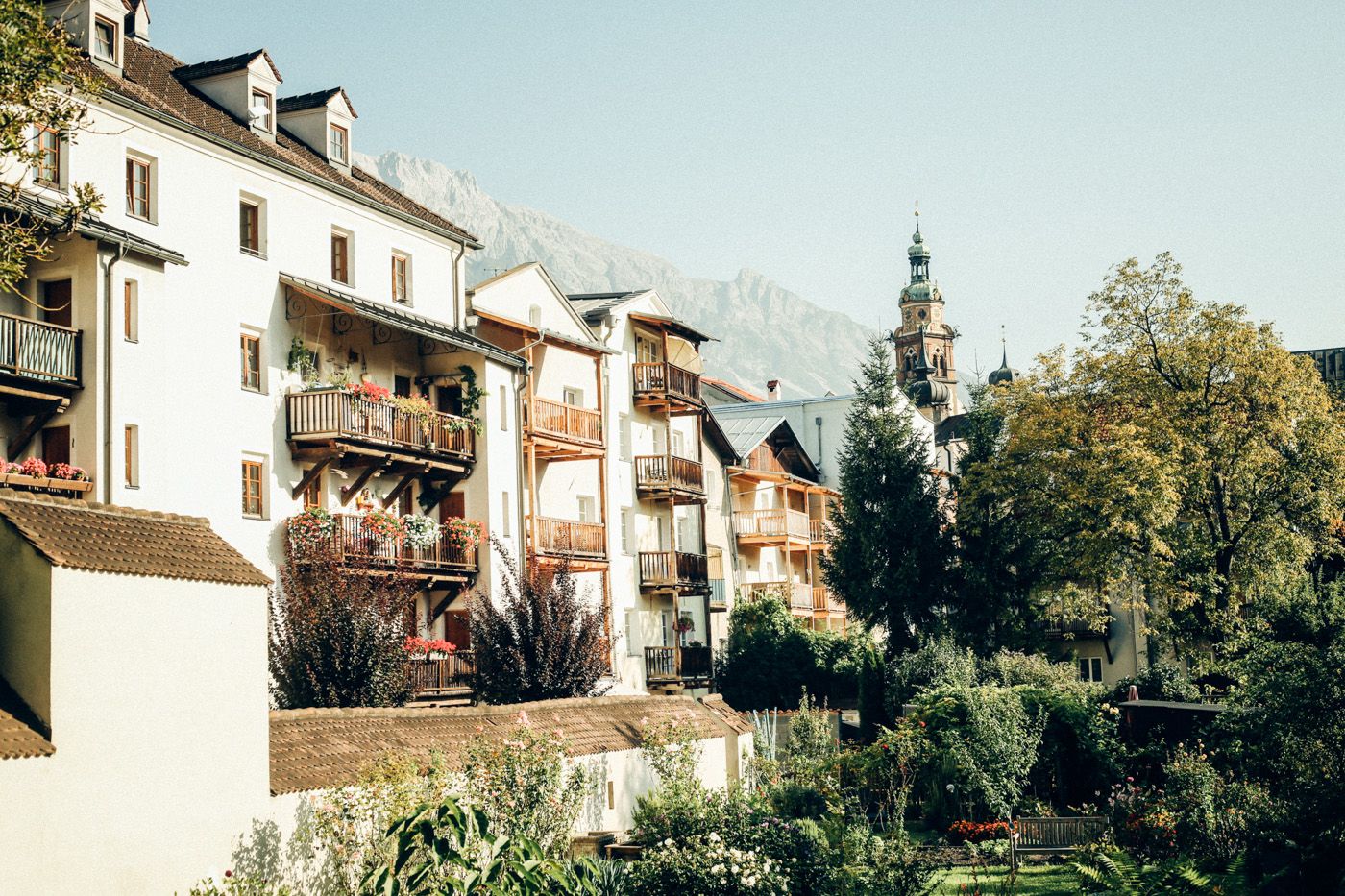
Later – when silver and copper mining began in the nearby town of Schwaz in the 15th century – the mint was moved from Merano in South Tirol to Hall and the town became the Mint of Tirol. During this time, Hall was one of the most important cities in the Habsburg Empire. Evidence of this eventful history can be found throughout the town – if you look closely, you will not only notice the major traces of the past but also small details that are often contrasted with modern elements to provide a quirky and eye-catching juxtaposition.
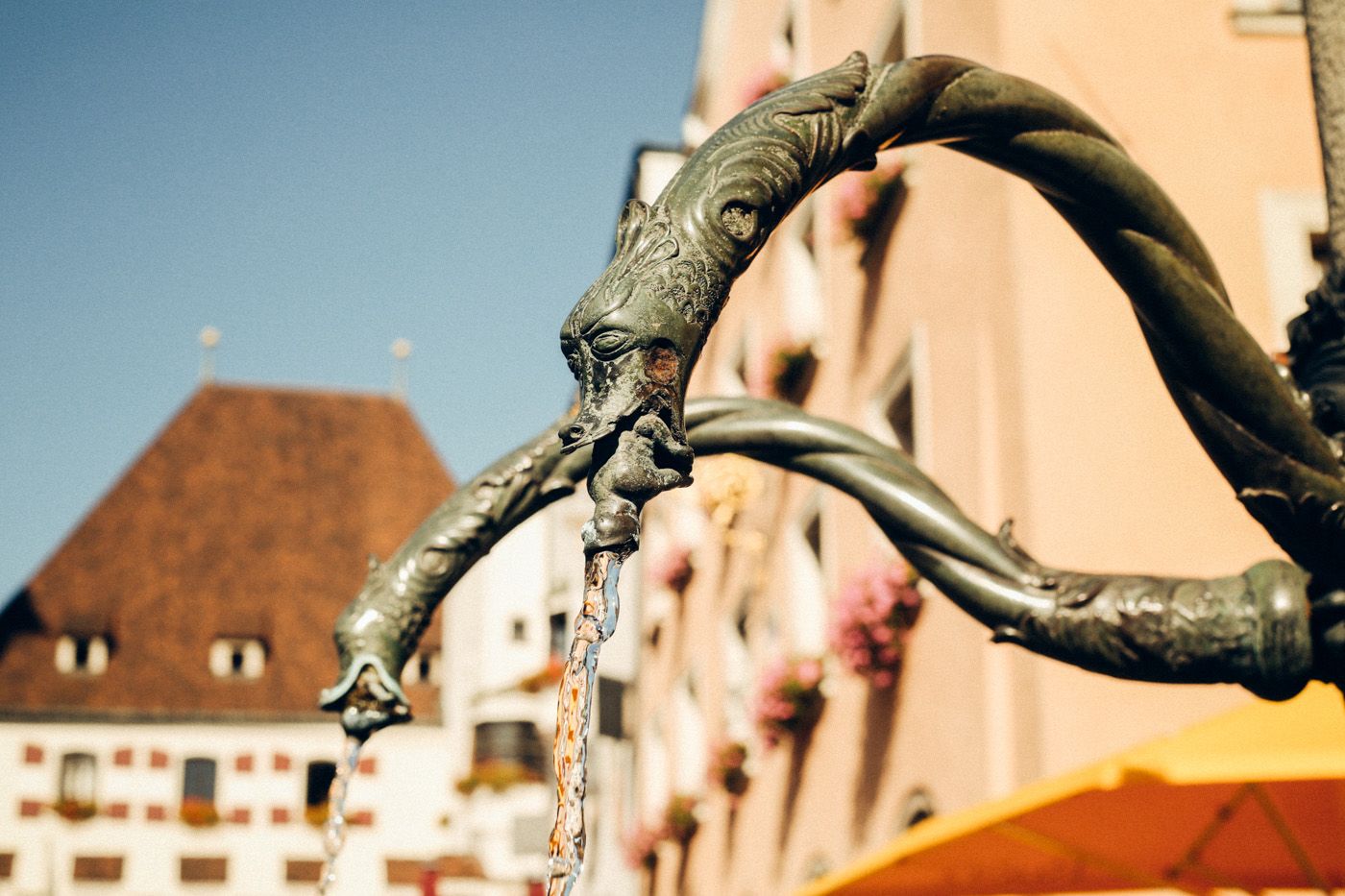
How to start a tour of Hall in Tirol? The best way to begin is with the obvious highlights: the Hall Mint and Hasegg Castle. There is an archaeological site on the way to the Hall Mint. Hall is in the process of applying to become a UNESCO World Heritage Site. A team of archaeologists and volunteers are now searching for the remains of the drive systems of the roller embossing machines, which could date back to the 16th century.
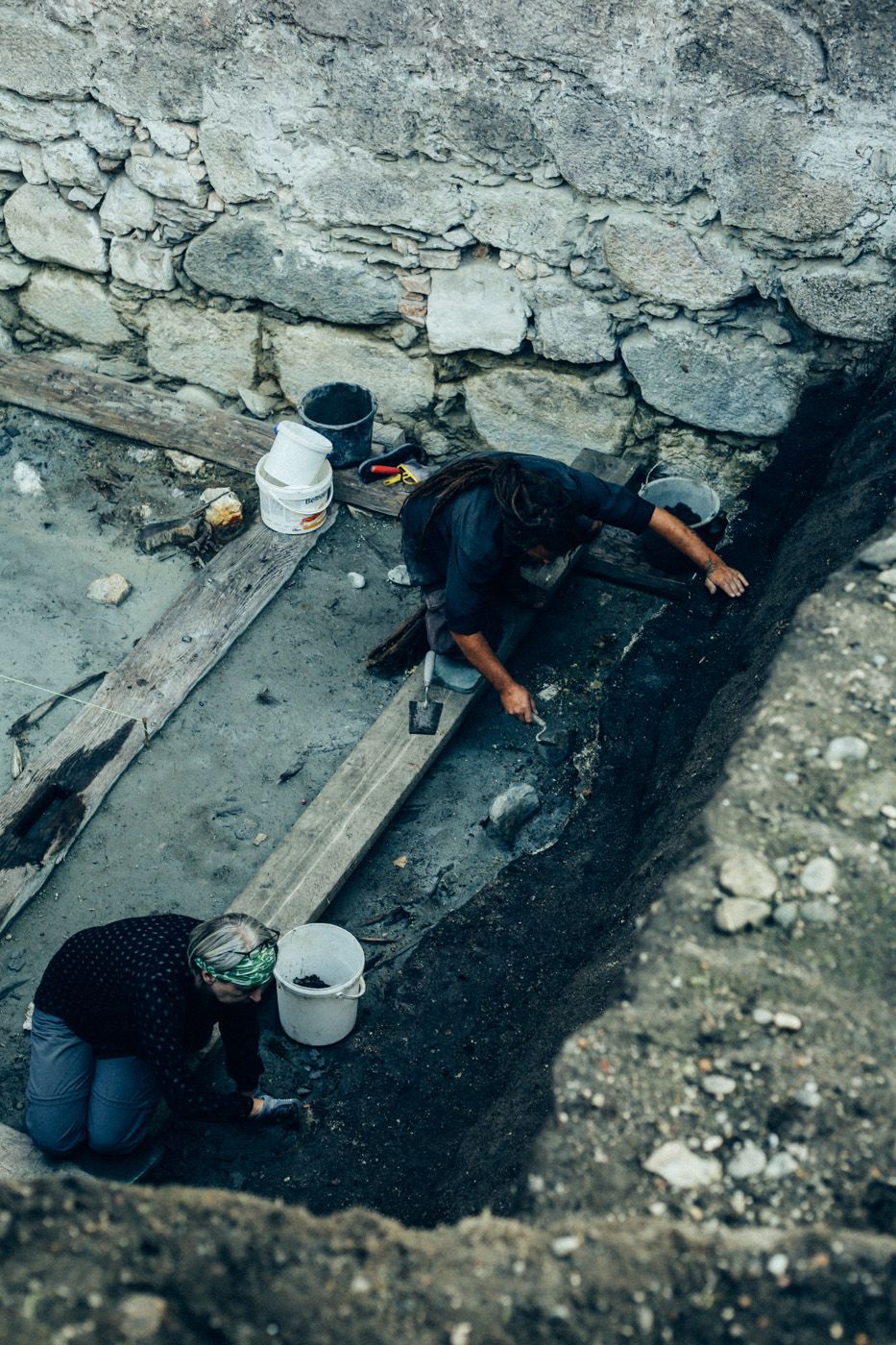
The small town of Hall in Tirol was of great importance to the European economy in the 15th and 16th centuries. It is the birthplace of the thaler, a currency which served as the basis for the most important currencies in the world such as the US dollar or the yen. It also played a key role in the development of roller embossing technology. In Hall in Tirol, the roller embossing machine was even developed to the point where it was ready for mass production and could be exported – as early as the 16th century, 200 years before the Industrial Revolution.
The modern exhibition rooms of the Hall Mint Museum display various coins, as all rulers had their own coins minted with their likeness. These were even adapted to their advanced age. You would have to think about that today: Every time there is a change of chancellor or president, all the coins would have to be replaced again.
The exhibition includes the coveted Maria Theresa thaler, which was the official currency in parts of Africa until around 1945. It is also embossed on the side and was particularly forgery-proof. Today, the Hall Mint still mints coins for special occasions and customised designs - and of course visitors are also allowed to take their own coin home with them.
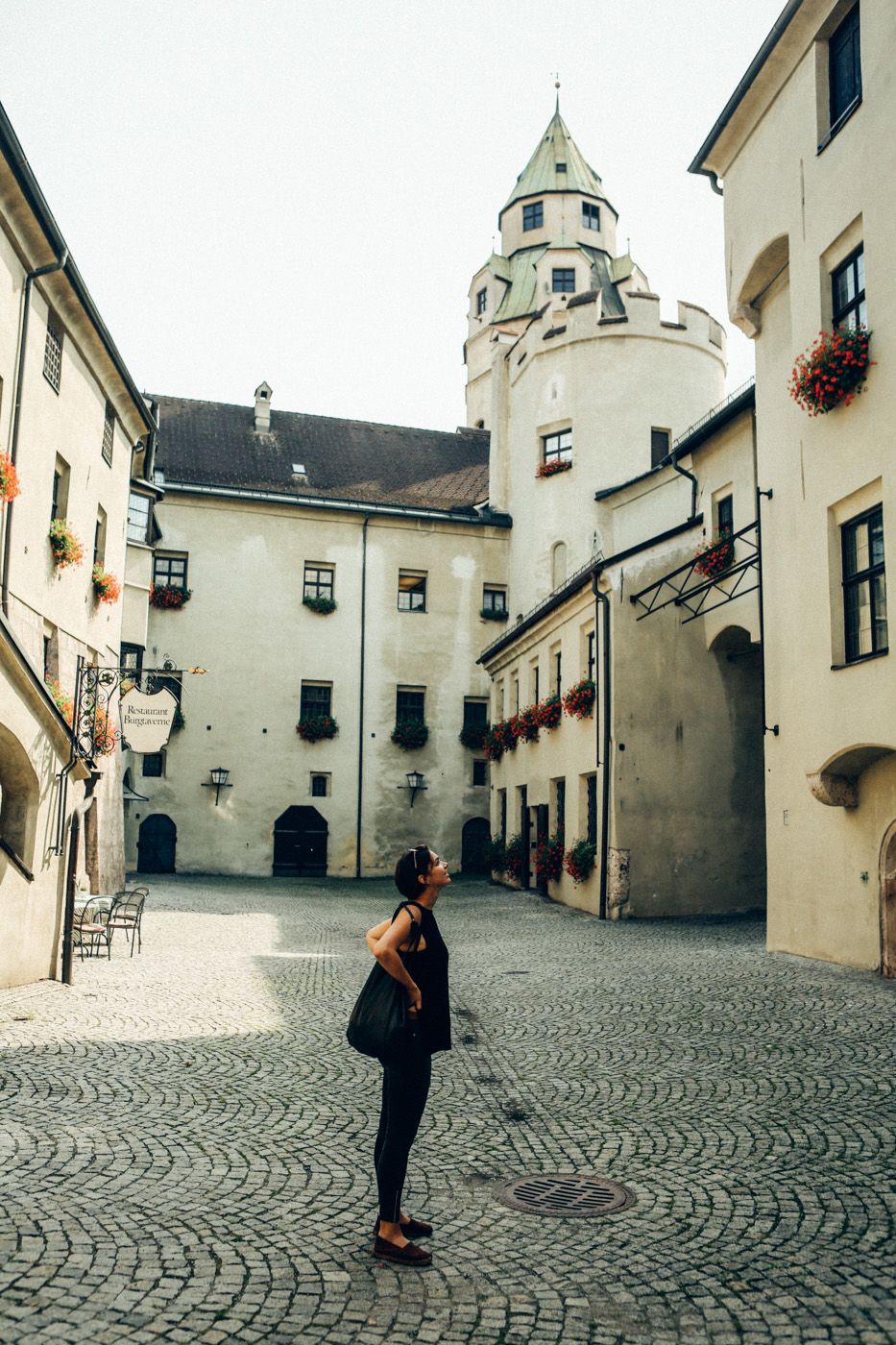
In the castle courtyard, it is worth taking a look up to the castle tower. Thanks to a co-operation with the Alpine Zoo, kestrels are reared in the tower of Hasegg Castle. Museum staff look after them and feed them. The animals can be observed via a webcam and fly in and out through the small windows.
The old town centre is waiting to be explored. At the Lower Town Square, the Sigmund Fountain catches the eye. The fountain figure depicting Archduke Sigmund of Tirol (he who moved the mint to Tirol and had the first thalers minted) was created by Linz-based artist Rudolf Reinhart. The inscription makes you smile: "Sigmund the Rich by Reinhart the Poor."
The special shop signs, fountain figures and street signs by metal sculptor Reinhart can be seen all over the city. Many of his sculptures can also be seen in the Diana Bar of the traditional "Goldener Löwe" restaurant on the Upper Town Square.
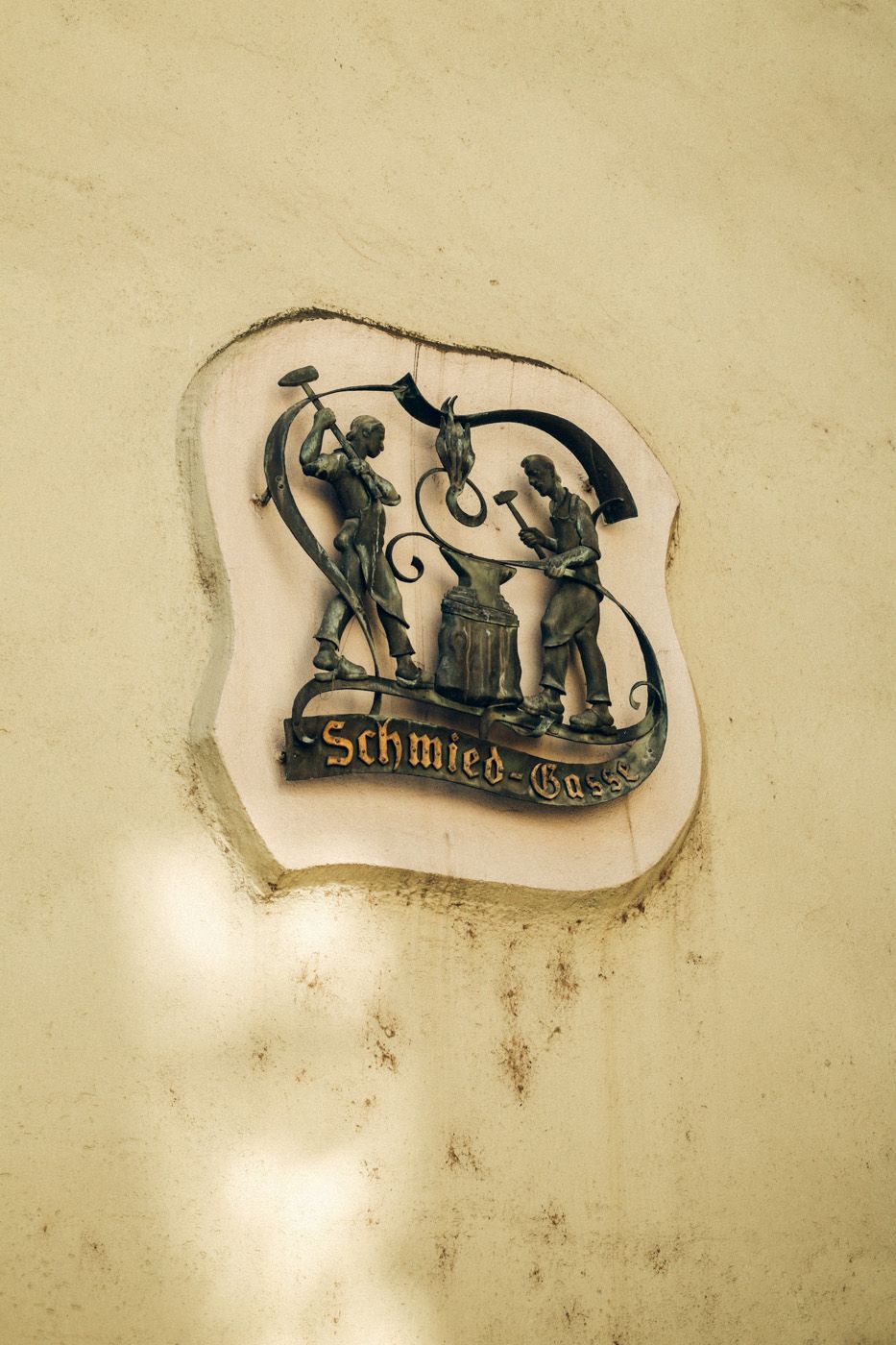
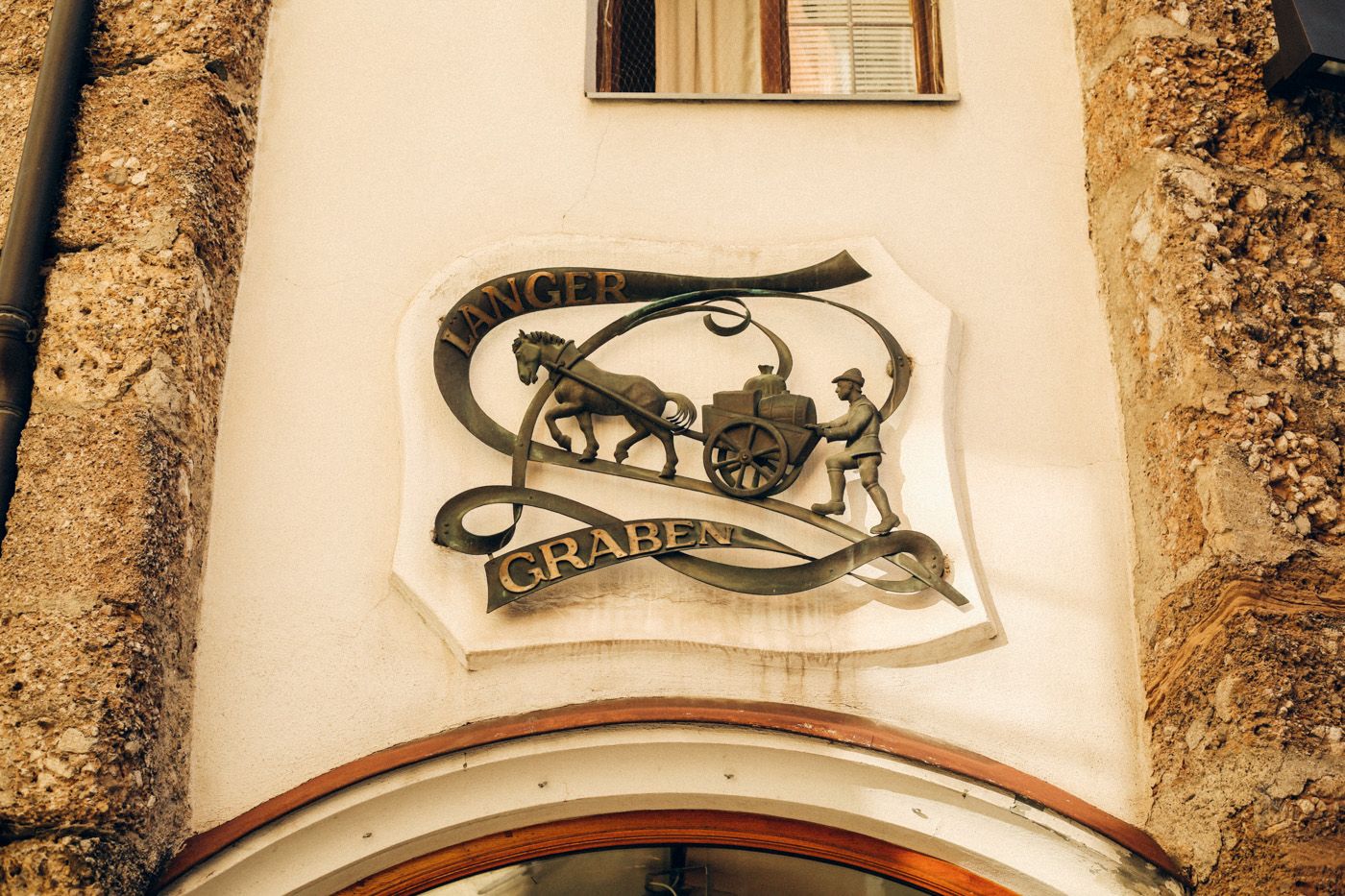
The path to the Upper Town Square, which can be reached via eight alleyways, leads past the Café Lizette. You can enjoy your coffee here like in a shop window, with the hustle and bustle of the alleyway always in view.
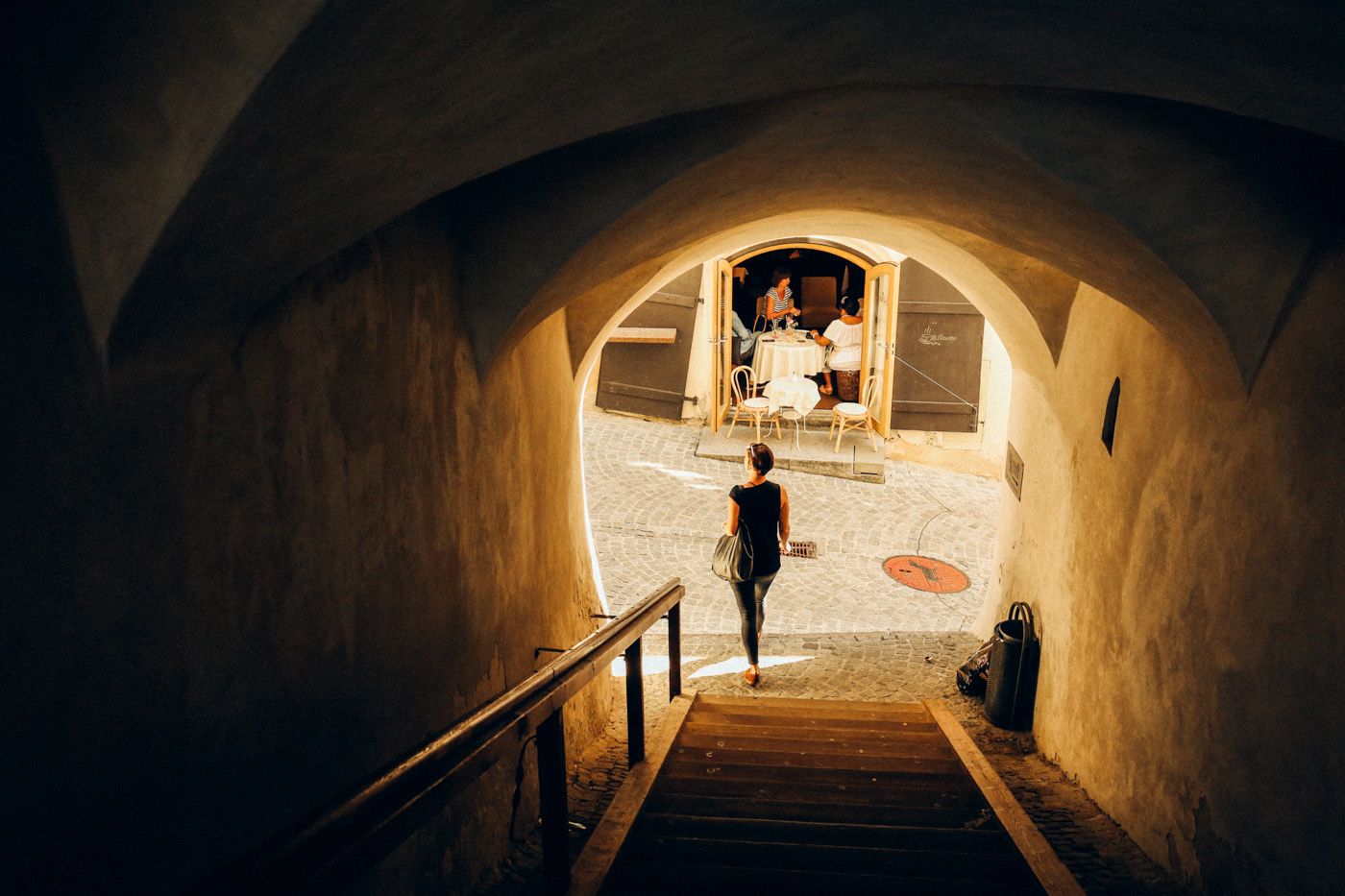
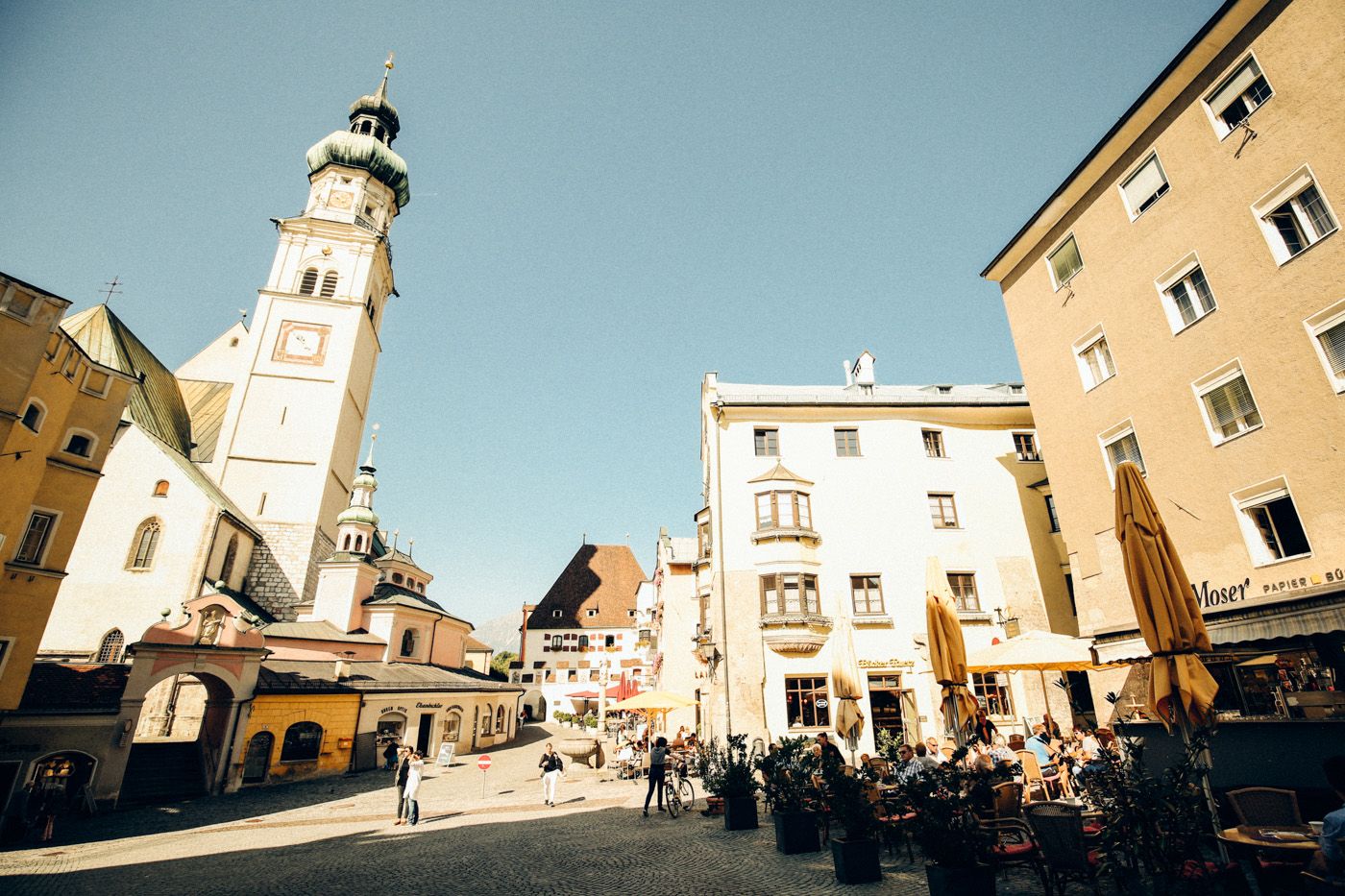
The Upper Town Square is the heart of the old town. In the shadow of the mighty Parish Church of St. Nicholas, cosy coffee houses invite you to take a break – it feels a bit like being in Italy here. A tip for coffee and cake is the Weiler Patisserie, which is famous for its sweet treats including the delicious “Haller Törtchen”.
The town hall sits right next to the parish church. Unmistakable with its steep roof and red-white-red shutters, it watches over the main square. The town hall houses the council chamber, which is also used for wedding ceremonies. The Magdalen Chapel, located on the east side of the parish church, is also worth a visit. Inside you can admire Gothic works of art, including the oldest frescoes in Hall in Tirol.
